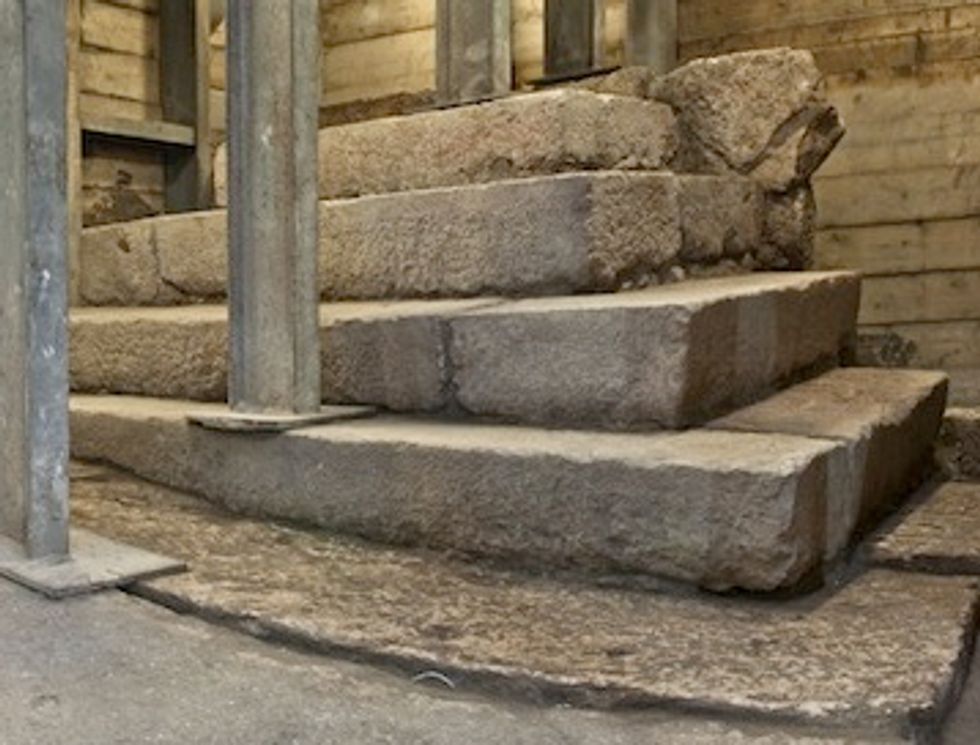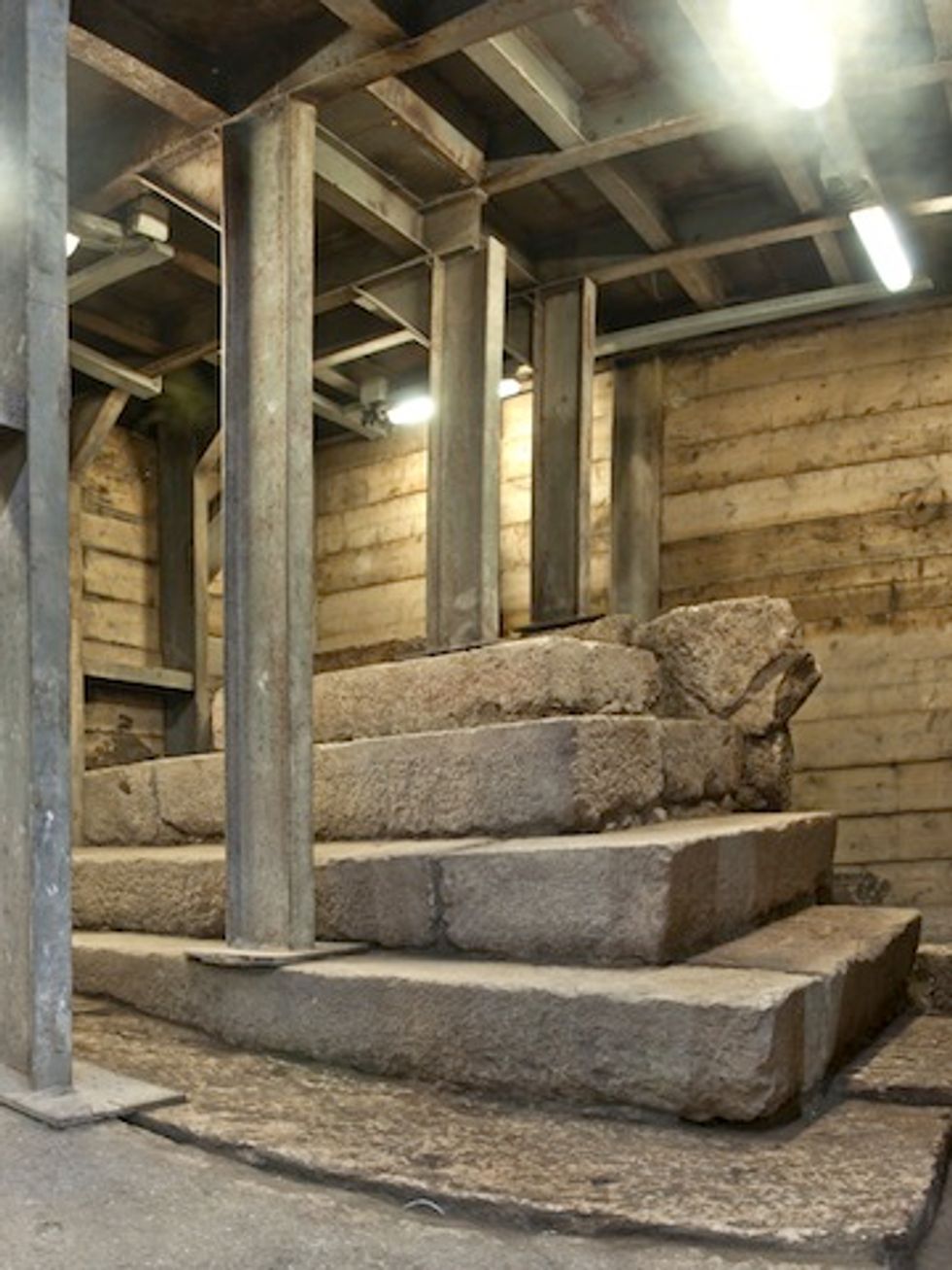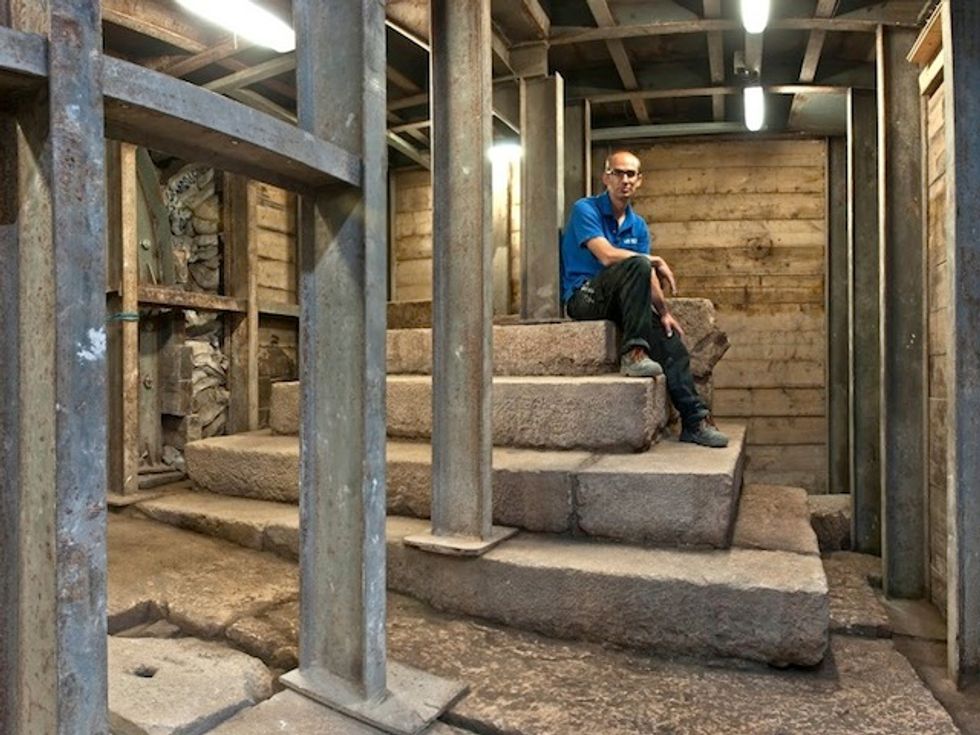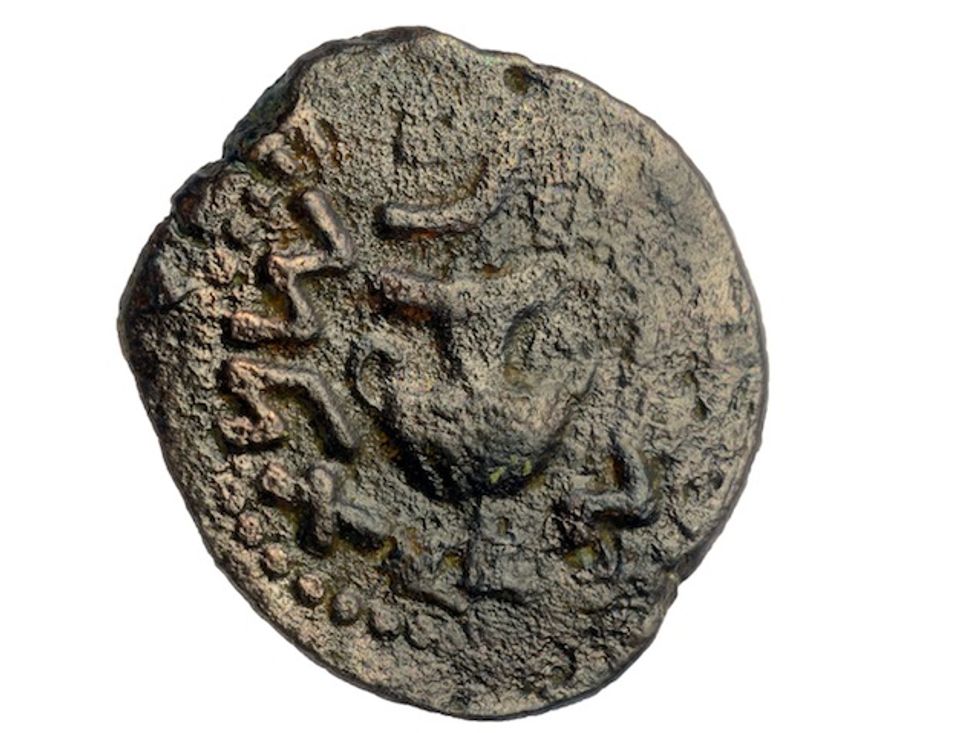
The stepped "mystery" structure from the Second Temple period. (Photo courtesy: Israel Antiquities Authority/Shai Halevy)

Israeli archaeologists have found a stone structure in Jerusalem that they believe dates to shortly after Jesus spent his last days in the holy city, but what exactly it was used for nearly 2,000 years ago remains a mystery.

The Israel Antiquities Authority announced Monday the find of a first century A.D. pyramid-shaped staircase built of large ashlar — or finely cut — stones.
The structure excavated in the City of David is an integral part of a 2,000-year-old stepped street that once led Jewish pilgrims from the Pool of Siloam, or Shiloah, on the southern slope of the City of David to the Second Temple which sat on the Temple Mount, excavation director Dr. Joe Uziel told TheBlaze Monday.
Archaeologists are unsure as to what the “enigmatic” pyramid-shaped staircase was used for.
“It’s a unique structure. It doesn’t lead to any building,” the archaeologist with the Israel Antiquities Authority said. “No other similar structure has been found in Jerusalem and, as far as we know, around the world."
Uziel, along with co-excavation director Nahshon Szanton, said in a joint statement that “given the lack of a clear archaeological parallel to the stepped-structure, the purpose of the staircase remains a mystery.”

One of the hypotheses they’ve considered is that the structure served as a podium for making public announcements, strategically situated on the important pathway.
“We can’t know for sure if the person standing on the podium would have been announcing to pilgrims [to be] righteous, bring tithes, or announcing something else,” Uziel said.
“Were messages announced here on behalf of the government? Perhaps news or gossip, or admonitions and street preaching? Unfortunately we do not know,” the excavation directors said.
Uziel noted that the structure was built at the same time as the road, based on its positioning, style and the type of stones used.
“Whoever built the podium had a very specific intention because it was part and parcel of the road itself,” Uziel said.
Szanton and Uziel said British archaeologists Frederick Bliss and Archibald Dickie stumbled across a small portion of the structure 100 years ago. At the time, before it was fully excavated, they thought it might be steps that led to a house.

The theory that it served as a podium stems from rabbinic texts, which refer to stone platforms used for auctions and finding lost belongings during the Second Temple period, the Israel Antiquities Authority noted:
For example, one source cites the “auction block” in connection with the street: “[a master] will not set up a market stand and put them (slaves) on the auction block” (Sifra, BeHar 6). In the Mishnah and Talmud the “Stone of Claims” is mentioned as a place that existed in Jerusalem during the Second Temple period: “Our Rabbis taught: There was a Stone of Claims in Jerusalem: whoever lost an article repaired thither, and whoever found an article did likewise. The latter stood and proclaimed, and the former submitted his identification marks and received it back. And in reference to this we learnt: Go forth and see whether the Stone of Claims is covered” (Bava Metzia 28:B).
The street of the mystery stone structure was one of the largest construction projects in Jerusalem during the Second Temple period and incorporated “enormous” stone slabs, the Antiquities Authority explained.
The well-preserved street is believed to run above a drainage channel which was uncovered several years ago.
Researchers say the channel was built in the fourth decade of the first century A.D. and carried rainwater out of the city.
Archaeologists also found whole pottery vessels, stone vessels and glassware at the foot of the pyramid-shaped staircase.
Uziel said that the road was walked on by “many, many thousands of pilgrims” particularly around the Jewish holidays in order to fulfill their holiday requirements at the Temple.
The archaeologists have dated the podium to shortly after 30 A.D.
“Since our dating is slightly after Jesus, he wouldn’t have walked on this road. Would he have walked a similar path? Possibly,” Uziel said.